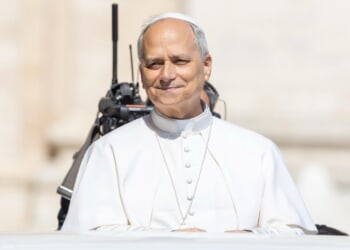A massive blackout that left millions in western Europe in the dark has raised concerns among energy experts that the event stemmed from or was worsened by an overreliance on renewable energy.
The outage, which occurred Monday, disrupted communications, caused some water services to fail, shut down trains, halted electronic payments and ATM transactions, disturbed traffic and stranded travelers around Spain, Portugal and France. Europe’s increased dependence on renewable energy, promoted by its pursuit of net-zero emissions policies, has made the grid more vulnerable to such disruptions, according to energy policy experts who spoke with the Daily Caller News Foundation.
The grid failure that began in Spain also impacted its neighboring countries, as the grids are interconnected. Most of the power had been restored by Tuesday morning, the Spanish grid operator Red Eléctrica de España (REE) wrote on X. REE’s director of services for system operation Eduardo Prieto dismissed the possibility of a cyberattack and stated that “two separate disconnections” led to the grid failure, though a final report will determine the outage source.
“We don’t know exactly what the immediate cause was,” Emmet Penney, a senior fellow at the Foundation For American Innovation and writer, told the DCNF. “Regardless of what happened, Spain has over-indexed on renewable energy, which has left it vulnerable to what would be minor disturbances having a catastrophic effect.”

People wait outside the Atocha train station in Madrid after its closure as a massive power outage hits Spain on April 28, 2025. (Photo by THOMAS COEX/AFP via Getty Images)
Penney explained that before the outage, much of the power portfolio in Spain was reliant on wind and solar energy production. In 2024, for example, 56% of Spain’s electricity stemmed from renewables, according to REE.
The outage comes less than two weeks after Spain announced that renewable sources had supplied all the electricity needed across the country’s mainland grid on April 16 — the first time this has occurred on a weekday.
Spain’s Prime Minister Pedro Sánchez said that the outage occurred when 15 gigawatts of power were “suddenly lost from the system” within just five seconds. This sharp decline disrupted grid frequency and led to cascading failures throughout the interconnected systems. Portugal, which depends heavily on power imports from Spain, suffered widespread outages, while parts of southwestern France experienced brief disruptions due to the break in the electrical link with Spain. At least five deaths have been attributed to the blackout due to oxygen machine failures and generator use, the Guardian reported.
Sánchez claimed that the blackout was not caused by the country’s use of renewables and further denied that a lack of nuclear energy contributed to the incident during a speech on Tuesday, adding that recovery “would have been slower” if the nation had relied more heavily on nuclear energy. (RELATED: ‘Just Getting Started’: Energy Experts Say Trump Admin Could Fuel ‘Nuclear Renaissance’)
Less than two years ago, climate activists in Spain celebrated the announcement that the country’s largest coal plant would be shut down by November 2023. A representative from Beyond Fossil Fuels said the plant’s closure highlights “how much renewables are outperforming fossil fuels on price, energy security and desirability.”
Spain also plans to completely phase out nuclear energy, which made up 19% of the nation’s energy in 2024 according to REE, by 2035 in favor of renewable sources, though some companies in the country are lobbying to get the deadline pushed. Other European countries like Germany have made similar pledges, though Italy and Belgium have recently moved to reverse their nuclear phase-out plans.
“In an effort to please the climate activists, Spain has been bragging about hitting 100% renewable power on the national grid, but days later, they suffered the largest blackout in Spain’s history,” Will Hild, the executive director of the non-profit consumer advocacy group Consumers’ Research, told the DCNF. “This blackout was completely predictable and avoidable, if only European authorities had focused on providing reliable energy to people in Spain, instead of kowtowing to climate activists,” he wrote. (RELATED: A Major Backer Of Green Energy Admits Again That Solar And Wind Power Alone ‘Can’t Reliably Keep The Lights On’)
The blackout ranked among the most significant power outages in European history and is the largest in the region since a 2003 blackout in Italy, which lasted 18 hours and impacted 57 million people.
The country receives 17% of its energy from solar power on average, though it has powered up to almost 80% at a time, which meant that grid operators were “sprinting against sunset,” on Monday, Penny explained, as a huge energy drop-off was expected by sundown. He and other energy policy analysts pointed to a lag in the grid’s inertia — it’s inability to continue running smoothly after a disturbance occurs between energy supply and demand — which they say was likely prompted by an overreliance on renewables.
“This is a tragic and deadly unforced error caused either largely or entirely by Spain, Portugal and the rest of Western Europe worshiping at the altar of wind and solar power,” James Taylor, energy analyst and president of the conservative think tank Heartland Institute, told the DCNF. “The irony is wind and solar shills were spiking the football earlier this month when Spain powered their entire grid with wind and solar power. Not only is that dependence on wind and solar the reason why Spain pays twice as much for its electricity than the United States, but it is also the reason why Spain’s electrical grid was made vulnerable to such a widespread and devastating blackout,” he said.
“Europe is quite fortunate that this power failure occurred during the moderate temperatures of April rather than the hot summer months or the cold winter months,” Taylor continued. “In the modern world, we should not have to roll the dice every time we attempt to turn on medical equipment, home furnaces and other necessary devices.”
While Europe has largely led the charge away from more reliable forms of energy, some states in the U.S. are not far behind. As Washington, California, New Mexico and several others states have added barriers for base load power production like coal or nuclear and incentivized renewable energy sources, the nation’s grid is inching closer to its own devastating blackout, energy policy experts have warned.
The North American Electric Reliability Corporation’s (NERC) 2024 report and an analysis from Always On Energy Research have both projected that rolling blackouts could begin in certain U.S. regions in the next few years. Blackouts have already occurred in California, which relies on solar for almost 30% of its power generation, and Democratic Gov. Gavin Newsom in 2022 asked Californians to avoid using power during peak hours to conserve energy during a heat wave.
The risk of blackouts increases if supply does not grow at the same pace as American energy demand, and U.S. energy demand is expected to grow by 35-50% between 2024 and 2040, according to an American Clean Power report. Supply is lagging behind, which has prompted the concern of operators, regulators and policymakers. The push toward renewable energy sources, in addition to stringent environmental regulations approved under former President Joe Biden, may have contributed to the shortage.
“The rush to renewables is not going as smoothly as we were told it would,” Isaac Orr, vice president of research at Always On Energy Research, told the DCNF. “It doesn’t make any sense for Congress to keep subsidizing these resources that are making the grid more prone to blackouts. It’s like we’re subsidizing our own energy self-destruction,” he said.
Let’s call it:
The first big blackout of the green electricity era
(Below my notes from the conference call the Spanish grid operator held earlier today with reporters. I added extra information from my initial post, and corrected a location: it was the south-west). 🧵1/2 pic.twitter.com/6HeTYcoPEM
— Javier Blas (@JavierBlas) April 29, 2025
“During the Winter Storm Uri in Texas, there wasn’t enough power to go around, so the frequency on the grid began to drop,” Orr said. During the storm, wind turbines in the state also froze over, contributing to the grid’s challenges. “If the frequency starts to drop too much, that’s when the big power plants, like the coal and nuclear plants, work a lot harder. They start to spin faster because they want to get the frequency back up and return to that ideal ‘Goldilocks frequency’ that the grid is optimized to run at. And if those power plants do that for too long, they can cause irreparable damage,” he continued.
Immediately after returning to the White House, President Donald Trump declared a national energy emergency, stating that “the integrity and expansion of our Nation’s energy infrastructure” is “an immediate and pressing priority for the protection of the United States’ national and economic security.” He has moved to fast-track permits and cut red tape for coal, nuclear and oil drilling in order to expand domestic energy production. (RELATED: ‘War On Coal Is Finally Over’: Energy Experts Say Trump Admin’s Deregulation Agenda Could Fuel Coal’s Revival)
“We looked at it and predict that there will be periods of blackouts of 24 hours or more,” Amy Cooke, the co-founder and president of Always on Energy Research and the director of the Energy and Environmental Policy Center, previously told the DCNF. “I think the number one most significant threat to humanity is no power,” Cooke said.
“We are watching the deindustrialization of the West happen in real time — not because of war, but because of self-inflicted stupidity,” Jason Isaac, CEO of the American Energy Institute told the DCNF. “An America First energy policy must start by rejecting the decarbonization fantasies that are bankrupting nations and endangering lives,” he said.
REE did not respond to the DCNF’s request for comment.
All content created by the Daily Caller News Foundation, an independent and nonpartisan newswire service, is available without charge to any legitimate news publisher that can provide a large audience. All republished articles must include our logo, our reporter’s byline and their DCNF affiliation. For any questions about our guidelines or partnering with us, please contact licensing@dailycallernewsfoundation.org.





![Fans Shocked as Katy Perry Stops Concert After She’s Ambushed by Deranged Fan Onstage [WATCH]](https://www.right2024.com/wp-content/uploads/2025/06/Fans-Shocked-as-Katy-Perry-Stops-Concert-After-Shes-Ambushed-350x250.jpg)
![LA Protest Casualty? Dead Body Found as Riots Stretch Into Fifth Night [WATCH]](https://www.right2024.com/wp-content/uploads/2025/06/1749642627_LA-Protest-Casualty-Dead-Body-Found-as-Riots-Stretch-Into-350x250.jpg)


![Soros Network, Others Behind LA Riots [WATCH]](https://www.right2024.com/wp-content/uploads/2025/06/Soros-Network-Others-Behind-LA-Riots-WATCH-350x250.jpg)

![Tulsi Gabbard Calls for Arrest of James Comey Over Call to Assassinate Trump [WATCH]](https://www.right2024.com/wp-content/uploads/2025/05/Tulsi-Gabbard-Calls-for-Arrest-of-James-Comey-Over-Call-350x250.jpg)





